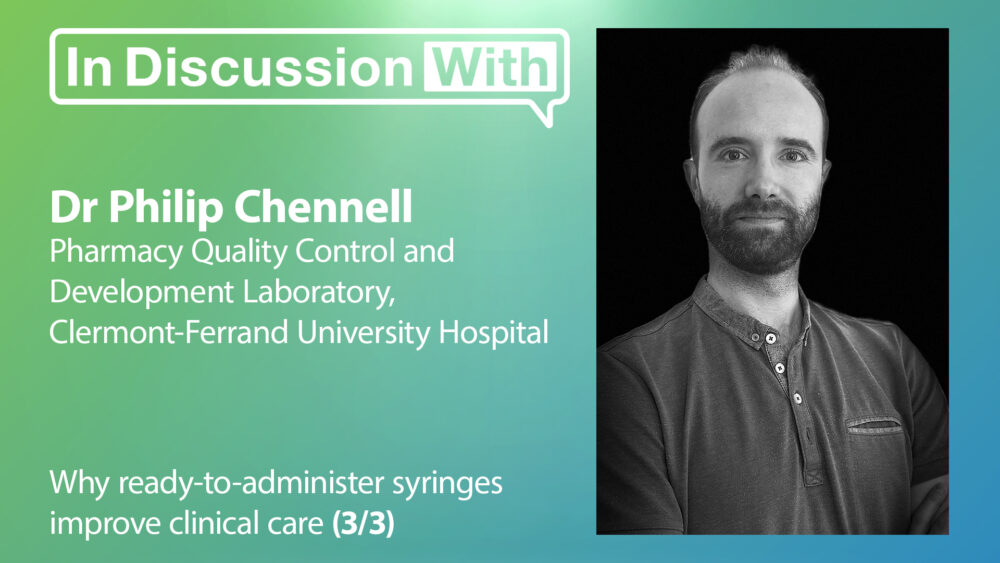Advertisment
Why ready-to-administer syringes improve clinical care

The provision of ready-to-administer bevacizumab syringes makes administration safer and quicker but finding a source of suitable syringes remains a challenge, says Dr Philip Chennell (Pharmacy Quality Control and Development Laboratory, Clermont-Ferrand University Hospital).
There are a number of advantages of providing bevacizumab as a ready-to-administer injection, preloaded into a syringe. First, even a brief contact with silicone oil (in polypropylene syringes) combined with the mechanical stresses of manipulating the syringe or, for example, flicking the syringe to remove air bubbles can be enough to trigger changes in the bevacizumab. Second, the clinical care process is smoothed. “By preparing these syringes directly in a pharmaceutical compounding unit it allows us to provide …… ready-to-administer syringes for the ophthalmologist or the end-user which means that they save time – they don’t have to perform the manipulation themselves. What they need to do is to just take the syringe, adjust the needle, [and] inject”, explains Dr Chennell.
Unfortunately, cross-linked silicon syringes are not yet available to hospital pharmacists in France in suitable packs. The packs that are available are designed for industrial use and are too large for use in hospital pharmacy compounding units. “We can’t really purchase a big bag containing 1,200 syringes and expect to be able to do something with them when we see that in our clinical setting, we only use a couple of dozen every week. Okay, after a year it does add up but we don’t need 1,200 in one big go – and how would we store them? How would we keep them sterile?”, he says.
Since giving the presentation at the GERPAC congress Dr Chennell has been contacted by several colleagues in France who are also interested in this topic. He is also trying to find alternative syringe manufacturers who might be able to provide suitable products.
About Philip Chennell
Philip Chennell is a pharmacist, at the University Hospital of Clermont-Ferrand. He is currently in charge of the Quality Control and Development Laboratory of the hospital’s pharmacy. He is also Assistant Professor at the University Clermont Auvergne and a member of the Materials for Health Research Team, focusing on medical devices and content/container Interactions.
Read and watch the full series on our website or on YouTube.
This episode of ‘In Discussion With’ is also on Spotify. Listen to the full podcast now.






